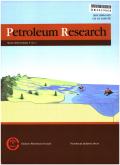注二氧化碳提高采收率:分析注入速率和井底压力的影响
IF 4
Q1 Earth and Planetary Sciences
引用次数: 0
摘要
净零碳排放的目标引起了人们对降低二氧化碳排放的广泛兴趣。与此同时,石油和天然气行业寻求提高石油采收率(EOR)技术,以满足不断增长的需求。二氧化碳驱是一种重要的提高采收率方法,具有双重优势:减少二氧化碳排放,提高采收率。本研究利用Nexus油藏模拟器研究注入速率和井底压力(BHP)对二氧化碳注入性能的影响,Nexus油藏模拟器是一种用于二氧化碳提高采收率研究的新应用。据作者所知,之前还没有发表过研究人员使用Nexus油藏模拟器来研究CO2-EOR的研究。在不同的注入速度和BHP限制下,对案例进行了彻底的调查。模拟结果表明,BHP对石油产量的影响很小,而增加注入量可显著提高累计产油量(COP) 33.39%,并将油藏寿命从20年延长至37年。总产油量增加到33150.7 MSTB,同时产水量减少,油藏压力保持不变。这些发现与之前的研究结果一致,强调了优化二氧化碳注入策略对于最大限度地提高采收率和油藏性能的重要性。本文章由计算机程序翻译,如有差异,请以英文原文为准。
CO2 injection for enhanced oil recovery: Analyzing the effect of injection rate and bottom hole pressure
The goal of net-zero carbon emissions has led to widespread interest in lowering carbon dioxide (CO2) emissions. At the same time, the oil and gas industry seeks to enhance oil recovery (EOR) techniques to meet growing demand. CO2 flooding, a key EOR method, offers a dual benefit: reducing CO2 emissions and enhancing oil recovery. This study investigates the impact of injection rate and bottom hole pressure (BHP) on CO2 injection performance using the Nexus reservoir simulator, a novel application in CO2-EOR research. To the best of the author's knowledge, there is no previous research published in which the researchers used the Nexus reservoir simulator for the study of CO2-EOR. Cases are thoroughly investigated with various injection rates and BHP limitations. Simulation results show that BHP has a minimal impact on oil production, whereas increased injection rates significantly enhance cumulative oil production (COP) by 33.39% and extend reservoir life from 20 to 37 years. Total oil production increased to 33150.7 MSTB, accompanied by reduced water production and maintained reservoir pressure. These findings align with previous research, underscoring the importance of optimized CO2 injection strategies for maximizing oil recovery and reservoir performance.
求助全文
通过发布文献求助,成功后即可免费获取论文全文。
去求助
来源期刊

Petroleum Research
Earth and Planetary Sciences-Geology
CiteScore
7.10
自引率
0.00%
发文量
90
审稿时长
35 weeks
 求助内容:
求助内容: 应助结果提醒方式:
应助结果提醒方式:


